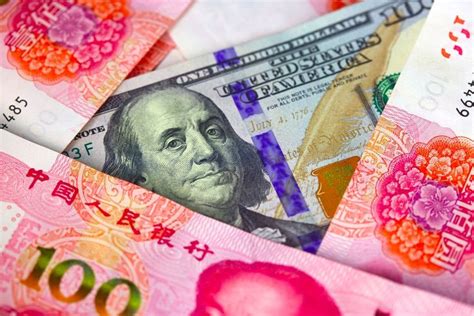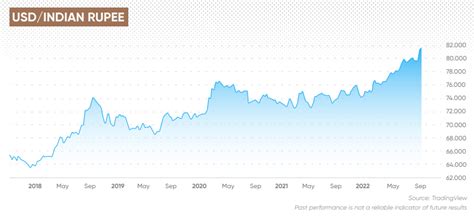Introduction

The conversion between the US dollar (USD) and the Chinese yuan (RMB) is crucial for global trade, investment, and currency markets. Businesses, individuals, and governments rely on accurate and up-to-date exchange rates for efficient and competitive cross-border transactions. This article provides a comprehensive guide to USD to RMB conversion, addressing key pain points, motivations, methods, and benefits.
Exchange Rate Fluctuations and Pain Points
The USD to RMB exchange rate is subject to constant fluctuations, influenced by factors such as economic growth, interest rate differentials, geopolitical events, and trade imbalances. These fluctuations can create challenges for businesses and individuals engaging in international transactions.
Pain Points:
- Risk of Currency Loss: Unexpected changes in the exchange rate can result in financial losses for businesses and individuals holding foreign currencies.
- Transaction Delays: Fluctuating exchange rates can lead to delays in transactions as parties adjust to changing market conditions.
- Uncertainty in Pricing: Businesses face uncertainty when pricing goods and services in foreign markets due to exchange rate volatility.
Motivations for USD to RMB Conversion
Despite the challenges, there are several key motivations driving the need for USD to RMB conversion:
- Global Trade: China is one of the largest trading nations in the world, and the RMB is widely used in international transactions.
- Investment Opportunities: China’s growing economy and open capital markets attract foreign investment, requiring efficient currency exchange.
- Travel and Tourism: The growing number of Chinese travelers abroad and international visitors to China necessitate easy currency conversion.
Methods of USD to RMB Conversion
There are multiple methods for converting USD to RMB:
1. Banks and Currency Exchanges:
- The most common method is through banks and authorized currency exchanges.
- These institutions offer competitive exchange rates and convenient access to foreign currencies.
2. Online Currency Conversion Platforms:
- Digital platforms like PayPal and Western Union provide online currency conversion services.
- These platforms offer competitive rates but may charge transaction fees.
3. Foreign Exchange Brokers:
- Specialized foreign exchange brokers can negotiate favorable exchange rates for large-volume transactions.
- They typically charge a commission for their services.
4. Peer-to-Peer (P2P) Marketplaces:
- P2P marketplaces connect buyers and sellers of foreign currencies.
- These platforms offer flexibility and potential savings, but may have less stringent security measures.
Factors Affecting USD to RMB Exchange Rate
The USD to RMB exchange rate is influenced by a range of factors:
- Economic Growth: China’s strong economic growth has contributed to the appreciation of the RMB.
- Interest Rate Differentials: Higher interest rates in China compared to the US can attract foreign capital, strengthening the RMB.
- Government Intervention: The Chinese government actively manages the exchange rate to promote economic stability and control capital inflows.
- Demand and Supply: The demand for RMB from foreign investors and Chinese tourists affects the exchange rate.
- Global Economic Factors: Economic conditions in other countries, such as the US, can impact the relative value of the USD and RMB.
Role of Technology in Currency Conversion: Creating Ease
Technological advancements have transformed how currency conversions are executed. Digital platforms and mobile applications provide convenient and efficient solutions for converting USD to RMB.
Benefits of Technology in Currency Conversion:
- Faster Transactions: Digital platforms enable near-instantaneous currency conversions.
- Increased Transparency: Exchange rates and fees are clearly displayed, promoting transparency and informed decision-making.
- Convenience: Users can convert currencies anytime, anywhere, using their mobile devices.
- Reduced Costs: Digital platforms offer competitive exchange rates and lower transaction fees compared to traditional methods.
- Improved Security: Reputable digital platforms implement advanced security measures to protect transactions.
Historical and Forecasted Exchange Rates
Historical Exchange Rates:
| Year | USD/RMB |
|---|---|
| 2015 | 6.25 |
| 2016 | 6.67 |
| 2017 | 6.95 |
| 2018 | 6.92 |
| 2019 | 7.02 |
Forecasted Exchange Rates (2025-2030):
| Year | USD/RMB |
|---|---|
| 2025 | 7.25-7.50 |
| 2026 | 7.50-7.75 |
| 2027 | 7.75-8.00 |
| 2028 | 8.00-8.25 |
| 2029 | 8.25-8.50 |
| 2030 | 8.50-8.75 |
Please note that these forecasts are based on expert analysis and market trends but are subject to change based on unforeseen events.
Tips and Tricks for Efficient Currency Conversion
- Monitor Exchange Rates: Track exchange rate fluctuations and identify optimal times to convert currencies.
- Compare Exchange Rates: Shop around different platforms and banks to find the most competitive exchange rates.
- Consider Hedging Strategies: Utilize financial instruments like forward contracts to protect against adverse exchange rate movements.
- Maximize Transaction Volumes: Consider converting larger amounts of currency at once to negotiate better rates and reduce transaction fees.
- Utilize Technology: Take advantage of digital platforms and mobile applications for convenient and cost-effective currency conversions.
Conclusion: Why USD to RMB Conversion Matters
The conversion between USD and RMB is essential for businesses, individuals, and economies across the globe. Understanding the factors influencing the exchange rate, utilizing efficient methods, and staying informed about technological advancements can mitigate risks and enhance cross-border transactions. As China’s economic influence continues to grow, the ability to convert USD to RMB effectively will remain crucial for global financial stability and prosperity.



